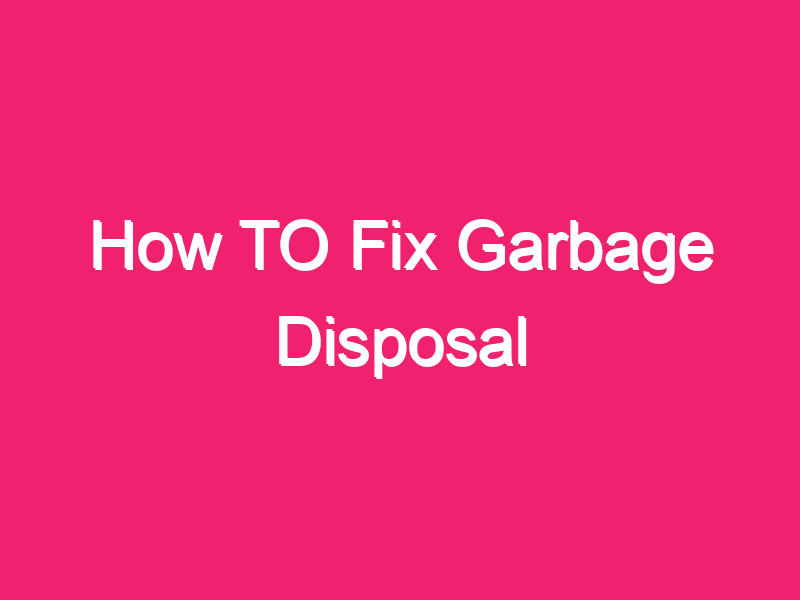If you have been frustrated by your clogged garbage disposal, there are a few things you can do yourself to repair it. First, make sure that the power is back on. If it’s on, it might be clogged and causing your disposal to run slowly. You can also try running water through the disposal at full blast. Finally, you need to check the J-bend, also known as a P-trap or an S-trap. It may be blocked, which will require the assistance of a plumber.
Depending on the model, you may have a tripped circuit breaker. If this is the case, make sure to reset the circuit breaker. If this still doesn’t work, try replacing the switch or replacing the circuit breaker. Once these steps have been followed, you should be able to turn on the garbage disposal once again. However, it is important to make sure that the garbage disposal is plugged in and powered up.
If your garbage disposal has a faulty motor, the first thing you need to check is the switch itself. It may be on the wall or under the sink. To find it, you can use a voltage tester. The voltage tester will pinpoint electrical problems quickly. Once you’ve found the faulty switch, plug in the disposal again. If all else fails, replace the entire unit. If this isn’t an option, call a plumber. The plumber will be able to help you fix your garbage disposal.
Sometimes, the problem may be something as simple as a foreign object stuck in the flywheel. You can easily dislodge it by using pliers. Once you’ve removed the foreign object, turn on the electrical panel. If this doesn’t work, reset the disposal by pushing the red reset button on the wall switch. This should wash out the foreign object. When the unit is working properly, it will be ready to use again.
If you’ve pushed the reset button but the garbage disposal still doesn’t turn, chances are it has blown a circuit. You may also have unplugged the unit. Make sure the plug is securely plugged in. If all else fails, you can also try the reset button located on the underside of the unit. If this doesn’t work, you should consult a professional plumber. Your plumber will know exactly what caused the problem, and can help you choose a new unit.
You may be able to dislodge the jam with the wrench that came with your garbage disposal. Alternatively, you can use a long stick as a lever to remove the jammed flywheel. Once the flywheel is dislodged, run water to clear the sink plumbing. If the clog persists, you can use a sink auger to clear the clog. It may be difficult to remove a clogged flywheel, so you may need to remove the sink trap and clean out the drain completely.
If you’ve followed these steps, your garbage disposal should work once again. If the disposal still won’t work, call a plumber and have it fixed right away. There are several possible reasons why a garbage disposal may be not functioning properly, including an obstruction or a power issue. If you’re still not able to remove the clogged garbage, contact your local plumber for assistance. These three steps will help you diagnose and fix the cause of your clogged garbage disposal.
Often, a leaky garbage disposal is caused by a weak sealant. It may also have a failed plumber’s putty. To replace this sealant, turn the mounting bracket counter-clockwise. After you’ve done this, you can begin inspecting the garbage disposal under the sink. If it appears to be cracked or corroded, it’s best to replace it. However, if the leak persists, it’s likely to be a problem with the mounting flange.
If you notice a humming sound coming from your garbage disposal, it’s most likely due to a jammed device. If you can’t remove the disposal, unplug it from the power source to prevent further damage. Then use small tongs to clear the drain. After you’ve removed the disposal from the sink, make sure to unplug it. Once you’ve disconnected it, check the humming sound to make sure it’s working properly.


